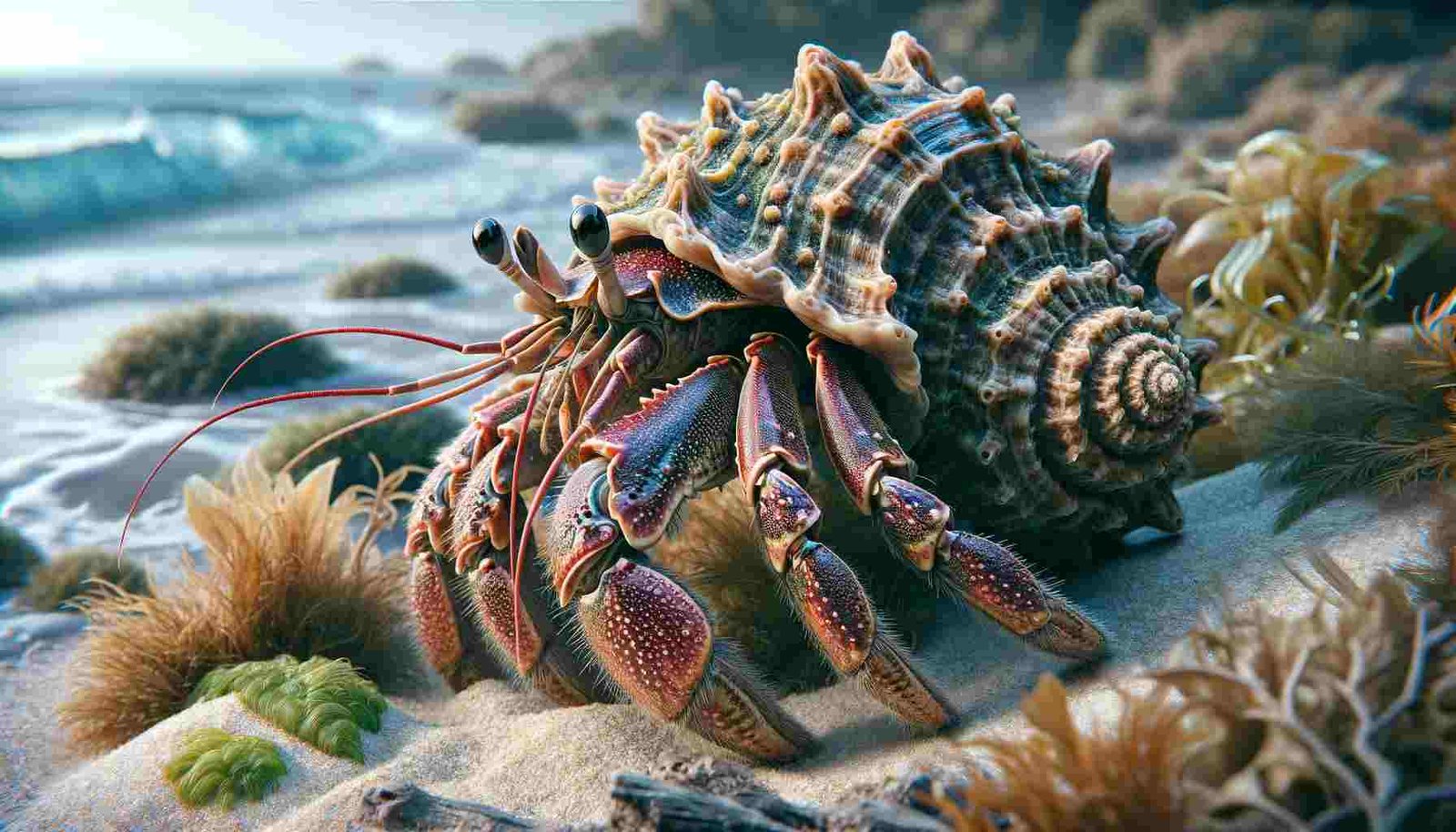You know, it’s really fascinating how the animal kingdom is teeming with creatures whose names start with ‘H’. It’s like opening a treasure trove of biodiversity, each with its unique traits and behaviors.
You’ve got the hefty hippos lounging in rivers, their massive jaws a sight to behold. And then there’s the humble hedgehog, with its spiky armor, scurrying around gardens at dusk. It’s this mix of the mighty and the modest that makes this group so intriguing.
List Of Animals That Start With H
- Hippopotamus
- Hedgehog
- Hermit Crab
- Hummingbird
- Hyena
- Humpback Whale
- Harpy Eagle
- Hamster
- Hare
- Hornbill
- Halibut
- Hawk
- Hoatzin
- Honey Badger
- Howler Monkey
- Hyrax
- Haddock
- Helmeted Guineafowl
- Horseshoe Crab
- Hoverfly
- Harrier (bird)
- Harris Hawk
- Horned Frog
- Harlequin Fish
- Himalayan Tahr
- Hoopoe
- Hartebeest
- Hellbender (salamander)
- Hammerhead Shark
- Highland Cow
Animals That Start With H (Fun Facts & Species Details)
1. Hippopotamus

Fun Fact: Hippopotamuses secrete a natural sunscreen called “blood sweat” which is neither blood nor sweat. This red fluid provides protection against germs and sunburn.
| Hippopotamus Details | Information |
| Scientific Name | Hippopotamus amphibius |
| Origin | Sub-Saharan Africa |
| Family | Hippopotamidae |
2. Hedgehog

Fun Fact: Hedgehogs are immune to snake venom, which makes them one of the few mammals with this unique ability.
| Hedgehog Details | Information |
| Scientific Name | Erinaceinae |
| Origin | Europe, Asia, Africa |
| Family | Erinaceidae |
3. Hermit Crab

Fun Fact: Hermit crabs don’t grow their own shells. Instead, they find and use discarded shells from other creatures, changing them as they grow.
| Hermit Crab Details | Information |
| Scientific Name | Paguroidea |
| Origin | Worldwide in oceans |
| Family | Paguridae |
4. Hummingbird

Fun Fact: Hummingbirds are the only birds that can fly backwards, showcasing their unique and precise flying abilities.
| Hummingbird Details | Information |
| Scientific Name | Trochilidae |
| Origin | Americas |
| Family | Trochilidae |
5. Hyena

Fun Fact: Despite their dog-like appearance, hyenas are more closely related to cats and are part of the Feliformia suborder.
| Hyena Details | Information |
| Scientific Name | Hyaenidae |
| Origin | Africa, Asia |
| Family | Hyaenidae |
6. Humpback Whale

Fun Fact: Humpback whales are known for their magical songs, which can last up to 20 minutes and be heard over great distances underwater.
| Humpback Whale Details | Information |
| Scientific Name | Megaptera novaeangliae |
| Origin | Global oceans |
| Family | Balaenopteridae |
7. Harpy Eagle

Fun Fact: The harpy eagle is one of the largest and most powerful raptors, capable of lifting prey almost equal to their body weight.
| Harpy Eagle Details | Information |
| Scientific Name | Harpia harpyja |
| Origin | Central and South America |
| Family | Accipitridae |
8. Hamster

Fun Fact: Hamsters have expandable cheek pouches which they use to transport food and bedding materials to their burrows.
| Hamster Details | Information |
| Scientific Name | Cricetinae |
| Origin | Syria, Europe, Asia |
| Family | Cricetidae |
9. Hare

Fun Fact: Unlike rabbits, hares are born with fur and can see at birth, making them more independent from an early age.
| Hare Details | Information |
| Scientific Name | Lepus |
| Origin | Worldwide |
| Family | Leporidae |
10. Hornbill

Fun Fact: Hornbills are known for their unique breeding behavior where the female is sealed inside a tree cavity with mud by the male during nesting.
| Hornbill Details | Information |
| Scientific Name | Bucerotidae |
| Origin | Africa, Asia |
| Family | Bucerotidae |
11. Halibut
Fun Fact: Halibuts are among the largest flatfish, and they can weigh up to several hundred pounds. Their eyes migrate to one side of their body as they grow, adapting to their bottom-dwelling lifestyle.
| Halibut Details | Information |
| Scientific Name | Hippoglossus |
| Origin | North Pacific and North Atlantic |
| Family | Pleuronectidae |
12. Hawk
Fun Fact: Hawks have incredible vision, being able to see up to eight times more clearly than the sharpest human eye.
| Hawk Details | Information |
| Scientific Name | Accipitrinae |
| Origin | Worldwide |
| Family | Accipitridae |
13. Hoatzin
Fun Fact: The hoatzin is often called the “stinkbird” due to its unique, manure-like odor, which is a result of its fermentation-based digestive process.
| Hoatzin Details | Information |
| Scientific Name | Opisthocomus hoazin |
| Origin | Amazon rainforest |
| Family | Opisthocomidae |
14. Honey Badger
Fun Fact: Honey badgers are known for their toughness and resilience. They have a reputation for being fearless and have been known to fend off much larger predators.
| Honey Badger Details | Information |
| Scientific Name | Mellivora capensis |
| Origin | Africa, Indian Subcontinent, Middle East |
| Family | Mustelidae |
15. Howler Monkey
Fun Fact: Howler monkeys are named for their loud howls, which can be heard up to three miles away in the dense forest, making them the loudest monkey species.
| Howler Monkey Details | Information |
| Scientific Name | Alouatta |
| Origin | South and Central America |
| Family | Atelidae |
16. Hyrax
Fun Fact: Despite their small size and rodent-like appearance, hyraxes are actually more closely related to elephants and manatees.
| Hyrax Details | Information |
| Scientific Name | Procaviidae |
| Origin | Africa and the Middle East |
| Family | Procaviidae |
17. Haddock
Fun Fact: Haddock fish are important commercially and are known for their distinctive dark blotch above the pectoral fin, often humorously referred to as the “Devil’s thumbprint.”
| Haddock Details | Information |
| Scientific Name | Melanogrammus aeglefinus |
| Origin | North Atlantic |
| Family | Gadidae |
18. Helmeted Guineafowl
Fun Fact: The helmeted guineafowl is known for its distinctive helmet-like casque on its head and its loud, clucking calls.
| Helmeted Guineafowl Details | Information |
| Scientific Name | Numida meleagris |
| Origin | Africa |
| Family | Numididae |
19. Horseshoe Crab
Fun Fact: Horseshoe crabs are ancient creatures that have existed for over 450 million years, predating even the dinosaurs.
| Horseshoe Crab Details | Information |
| Scientific Name | Limulidae |
| Origin | Coastal regions of Asia and North America |
| Family | Limulidae |
20. Hoverfly
Fun Fact: Hoverflies are adept at hovering in one spot, and they play a vital role in pollination, much like bees.
| Hoverfly Details | Information |
| Scientific Name | Syrphidae |
| Origin | Worldwide |
| Family | Syrphidae |
21. Harrier (Bird)
Fun Fact: Harriers are unique among hawks for their owl-like facial disks, which help channel sound to their ears for improved hearing while hunting.
| Harrier Details | Information |
| Scientific Name | Circus |
| Origin | Worldwide, especially open areas |
| Family | Accipitridae |
22. Harris Hawk
Fun Fact: The Harris Hawk is notable for its remarkable social behavior, often hunting in cooperative groups, a rare trait among raptors.
| Harris Hawk Details | Information |
| Scientific Name | Parabuteo unicinctus |
| Origin | Southwestern United States to Chile and central Argentina |
| Family | Accipitridae |
23. Horned Frog
Fun Fact: Horned frogs get their name from the prominent ‘horns’ above their eyes. They’re known for their voracious appetite, capable of eating prey almost as big as themselves.
| Horned Frog Details | Information |
| Scientific Name | Ceratophrys |
| Origin | South America |
| Family | Ceratophryidae |
24. Harlequin Fish
Fun Fact: Harlequin fish are small, brightly colored fish known for their distinctively patterned bodies, making them popular in the aquarium trade.
| Harlequin Fish Details | Information |
| Scientific Name | Rasbora heteromorpha |
| Origin | Southeast Asia |
| Family | Cyprinidae |
25. Himalayan Tahr
Fun Fact: The Himalayan Tahr is a rugged mountain goat with impressive agility, able to navigate steep and rocky terrain with ease.
| Himalayan Tahr Details | Information |
| Scientific Name | Hemitragus jemlahicus |
| Origin | Himalayas |
| Family | Bovidae |
26. Hoopoe
Fun Fact: The Hoopoe is known for its distinctive crown of feathers and its unique “oop-oop-oop” call, from which it gets its name.
| Hoopoe Details | Information |
| Scientific Name | Upupa epops |
| Origin | Europe, Asia, Africa |
| Family | Upupidae |
27. Hartebeest
Fun Fact: Hartebeests are known for their speed and endurance, capable of maintaining high speeds over long distances to escape predators.
| Hartebeest Details | Information |
| Scientific Name | Alcelaphus buselaphus |
| Origin | Africa |
| Family | Bovidae |
28. Hellbender (Salamander)
Fun Fact: The Hellbender is one of the largest salamanders in North America, known for its wrinkly skin which helps in absorbing oxygen from water.
| Hellbender Details | Information |
| Scientific Name | Cryptobranchus alleganiensis |
| Origin | Eastern United States |
| Family | Cryptobranchidae |
29. Hammerhead Shark
Fun Fact: Hammerhead sharks have a distinctive hammer-shaped head which improves their ability to find prey, aiding in maneuverability and sensory perception.
| Hammerhead Shark Details | Information |
| Scientific Name | Sphyrnidae |
| Origin | Worldwide in warmer waters |
| Family | Sphyrnidae |
30. Highland Cow
Fun Fact: Highland cows are known for their long, shaggy coats and large horns. These hardy cows are well adapted to the harsh conditions of the Scottish Highlands.
| Highland Cow Details | Information |
| Scientific Name | Bos taurus |
| Origin | Scotland |
| Family | Bovidae |





